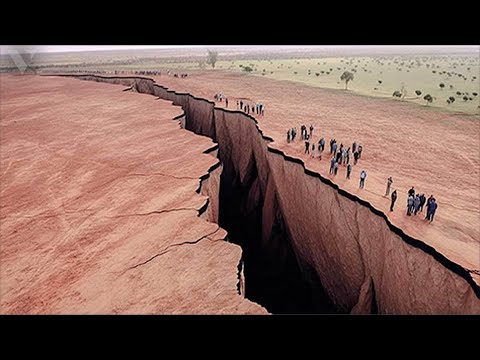Introduction: Tectonic Activity along Rhode Island’s Coastline
Rhode Island, the smallest state in the United States, is known for its picturesque coastline and stunning natural beauty. However, beneath the tranquility of its coastal region, lies a dynamic geological process known as tectonic activity. Tectonic activity refers to the movement and interaction of the Earth’s tectonic plates, which can result in seismic events such as earthquakes, volcanic eruptions, and the formation of mountains. While Rhode Island may not be as geologically active as some other regions, it is important to understand the extent of tectonic activity along its coastline and the potential risks associated with it.
Understanding Tectonic Activity: A Brief Overview
Tectonic activity occurs due to the movement of the Earth’s lithosphere, which is divided into several large and small tectonic plates. These plates constantly interact with each other, either colliding, sliding past, or moving away from one another. These interactions are responsible for shaping the Earth’s surface and causing various geological phenomena. Tectonic activity is most prominent at plate boundaries, where the movement of plates is more pronounced.
Historical Seismic Events in Rhode Island
Rhode Island has a relatively low frequency of seismic events compared to other regions along the Pacific Ring of Fire. However, it is not entirely free from such occurrences. In the past, the state has experienced several minor earthquakes, with the most notable one being the Cape Ann earthquake in 1755. This powerful quake, which had its epicenter in Massachusetts, was felt throughout Rhode Island and caused significant damage to buildings and chimneys. Although Rhode Island does not sit on any major fault lines, minor tremors can still occur due to the influence of nearby faults.
Geological Factors Influencing Tectonic Activity
Several geological factors contribute to the tectonic activity along Rhode Island’s coastline. The region lies on the northeastern edge of the North American Plate, situated between the Mid-Atlantic Ridge and the subduction zone along the Atlantic coastline. This tectonic setting influences the stress and strain in the lithosphere, leading to occasional seismic events. Additionally, the presence of faults and fractures in the bedrock, such as the Westerly Granite and Narragansett Basin faults, can further enhance the likelihood of tectonic activity.
Plate Boundaries and Rhode Island’s Coastal Region
Rhode Island is located in a region where multiple tectonic plates interact, albeit not as actively as in other parts of the world. The state lies on the North American Plate, which is bordered by the Eurasian Plate and the African Plate. Although the movement of these plates is relatively slow, it can still result in seismic activity. Furthermore, the Mid-Atlantic Ridge, a divergent plate boundary, is located several hundred miles to the east of Rhode Island.
Monitoring Tectonic Activity: Current Methods
To gain a better understanding of tectonic activity, scientists rely on various monitoring methods. In Rhode Island, the United States Geological Survey (USGS) operates a network of seismometers that detect and record seismic waves. These instruments are strategically placed throughout the state to accurately monitor any seismic activity. Additionally, satellite-based monitoring systems and other geophysical techniques are utilized to measure ground deformation and identify potential precursors to seismic events.
Analysis of Seismic Data in Rhode Island
By analyzing the seismic data collected over the years, scientists have been able to gain insights into the tectonic activity in Rhode Island. While the frequency and magnitude of earthquakes in the state are relatively low, the data indicate a pattern of occasional small tremors. These tremors are likely associated with the slow movement and interaction of nearby tectonic plates, rather than any major fault lines. The data also help in identifying areas with higher seismic activity potential, aiding in future hazard assessment.
Evidence of Tectonic Activity: Geological Features
Apart from seismic events, there are other geological features along Rhode Island’s coastline that provide evidence of tectonic activity. One notable feature is the presence of fault zones, such as the Blackstone Valley and Narragansett Bay fault systems. These faults are the result of past tectonic forces and can be observed through the offsets and deformations seen in rock formations. Additionally, the presence of coastal cliffs and raised beach terraces suggests vertical movements and uplift, which are characteristic of tectonic processes.
Impact of Tectonic Activity on Rhode Island’s Coast
While Rhode Island does not experience frequent large-scale earthquakes, the occurrence of even minor tremors can have an impact on coastal communities. Buildings and infrastructure, especially those constructed without proper seismic design considerations, may be vulnerable to damage. Additionally, the shaking and ground motion associated with earthquakes can trigger landslides and soil liquefaction, which pose additional risks to coastal areas. It is essential to recognize these potential impacts and take appropriate measures to mitigate the associated risks.
Future Risks: Assessing Tectonic Hazards
Assessing future risks associated with tectonic activity in Rhode Island involves analyzing various factors, including historical seismicity, geological data, and the behavior of nearby tectonic plates. While the state is not expected to experience catastrophic earthquakes, the potential for moderate tremors cannot be ruled out entirely. Scientists continue to study the region’s tectonic activity to refine hazard assessments and improve preparedness measures.
Measures to Mitigate Tectonic Hazards in Rhode Island
To mitigate the potential hazards associated with tectonic activity, Rhode Island has implemented several measures. Building codes and regulations have been updated to include seismic design provisions, ensuring that new structures are better equipped to withstand earthquakes. Additionally, public awareness campaigns aim to educate residents about earthquake preparedness and response strategies. These measures, combined with ongoing monitoring and research efforts, contribute to a more resilient coastal region.
Conclusion: Evaluating Tectonic Activity on Rhode Island’s Coast
While Rhode Island may not be as tectonically active as other regions, it is not exempt from the influence of nearby plate boundaries and geological factors. The state’s coastal region experiences occasional seismic events, which can have varying degrees of impact. By closely monitoring tectonic activity, analyzing seismic data, and understanding the geological features, scientists can assess the risks associated with earthquakes and implement measures to mitigate those risks. Ultimately, this knowledge helps to ensure the safety and resilience of Rhode Island’s coastal communities.





